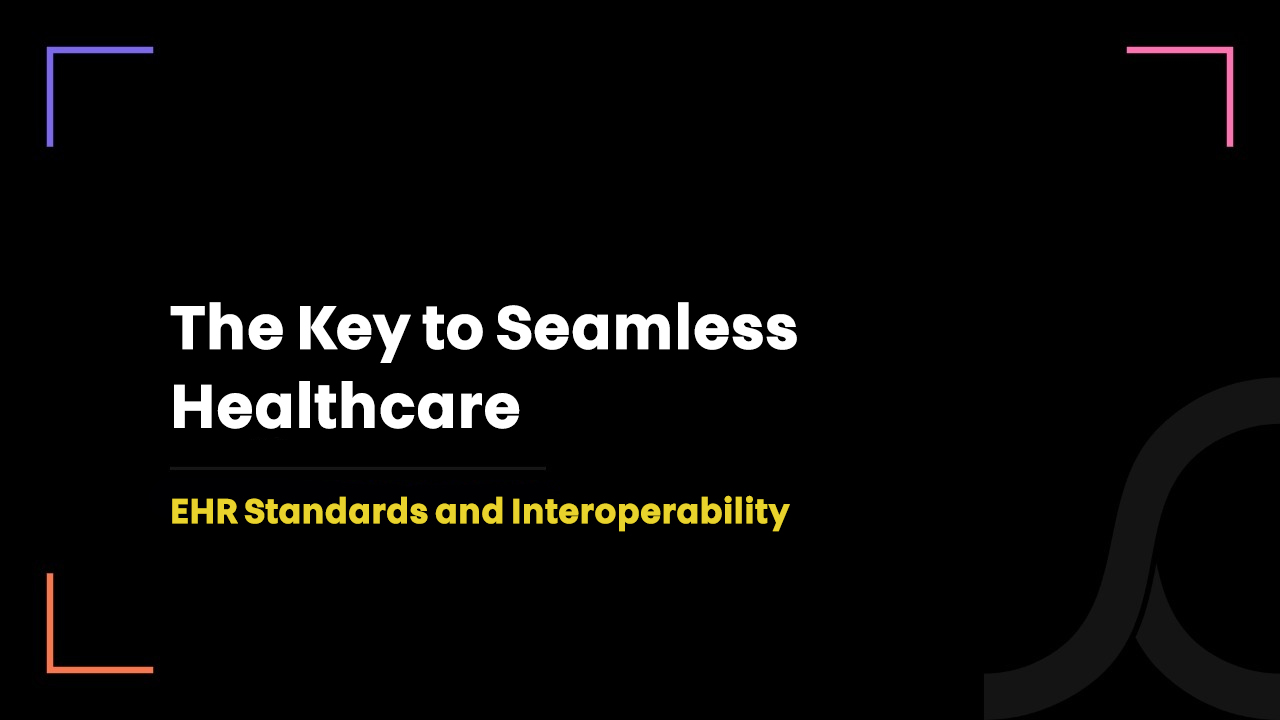Building a Connected Healthcare Ecosystem: The Role of EHR Standards in Advancing Interoperability

2 years ago
Electronic Health Records (EHRs) have revolutionized the healthcare industry by enabling healthcare organizations to efficiently store and access patient data.
However, the lack of interoperability among different EHR systems has hindered the exchange of crucial patient information, leading to fragmented care and compromised patient safety.
The Need for Interoperability
Interoperability refers to the ability of different healthcare systems and software applications to exchange and use patient data accurately, effectively, and securely.
With the increasing complexity of healthcare delivery and the use of disparate technologies, achieving interoperability has become vital.
Seamless data exchange is crucial for delivering coordinated care, improving patient outcomes, reducing medical errors, and enhancing operational efficiency.
The Importance of EHR Standards
EHR standards play a pivotal role in achieving interoperability among different healthcare systems.
If used effectively and consistently, EHR will give results like,
- Fewer Medical Errors
- Lower Expenses
- Increased Revenue
- Accurate Medical Records
- Better Standard Compliance
- Increased Efficiency
EHR standards are policies and procedures used for organizing workflow and exchanging data for healthcare organizations.
These standards ensure that information can be shared, understood, and utilized by different systems and stakeholders.
Some of the key EHR standards include
- HL7 (Health Level Seven)
- CDA (Clinical Document Architecture)/CCDA (Consolidated Clinical Document Architecture)
- FHIR (Fast Healthcare Interoperability Resources)
1. HL7
HL7 is one of the most widely adopted EHR standards globally.
It defines a set of protocols and message formats for the exchange, integration, sharing, and retrieval of electronic health information.
HL7 enables the seamless transfer of patient data between disparate healthcare systems, facilitating real-time information exchange, such as laboratory results, medication orders, and clinical summaries.
2. CDA
CDA is an XML-based standard used for structuring clinical documents in a standardized format.
It allows healthcare providers to exchange patient information in a human-readable and machine-interpretable manner.
CDA facilitates the exchange of documents like discharge summaries, progress notes, and diagnostic reports, ensuring that the information is consistently structured and easily accessible across different EHR systems.
3. FHIR
FHIR is a modern and emerging standard developed by HL7 that leverages the power of web-based technologies and APIs (Application Programming Interfaces) for healthcare data exchange.
FHIR promotes a modular and flexible approach to interoperability, enabling developers to build applications that can seamlessly access and exchange health information.
FHIR's resource-based model allows for the granular exchange of discrete data elements, facilitating targeted data sharing and interoperability.
Benefits of EHR Standards
Adhering to EHR standards offers numerous benefits to healthcare organizations, providers, and patients:
1. Seamless Data Exchange
EHR standards enable the seamless and secure exchange of patient information between different systems, ensuring a complete and accurate view of patient records across healthcare settings.
Improving care coordination and reducing redundancies in data entry.
2. Improved Patient Safety
Interoperable EHR systems help reduce medical errors by providing healthcare providers with access to comprehensive patient information, including allergies, medications, and previous diagnoses.
This enables informed decision-making and reduces the risk of adverse events.
3. Enhanced Efficiency
Standardized data formats and protocols streamline data exchange processes, eliminating the need for manual data entry and enabling automation.
This improves operational efficiency, reduces administrative burden, and frees up valuable time for healthcare providers.
4. Patient-centric Care
EHR standards empower patients to access and control their health data, fostering active participation in their care.
Patients can securely share their health information with multiple providers, facilitating collaborative and patient-centric care models.
5. Accelerated Innovation
EHR standards foster interoperability and data liquidity, which fuels innovation in healthcare.
Developers can leverage standardized data formats and APIs to create new applications, tools, and analytics solutions that improve patient care and drive healthcare advancements.
Leave the EHR Standards Adherence to Us and Focus on Providing Better Care
We’re a local Canadian healthcare IT company.
Our team of healthcare app developers, UI/UX designers, business analysts, and compliance specialists are some of the sharpest brains when it comes to healthcare IT.
We’ve been working in the healthcare sector from the first day of our careers.
Fill out the form below if you have any EHR Standards requirements.
